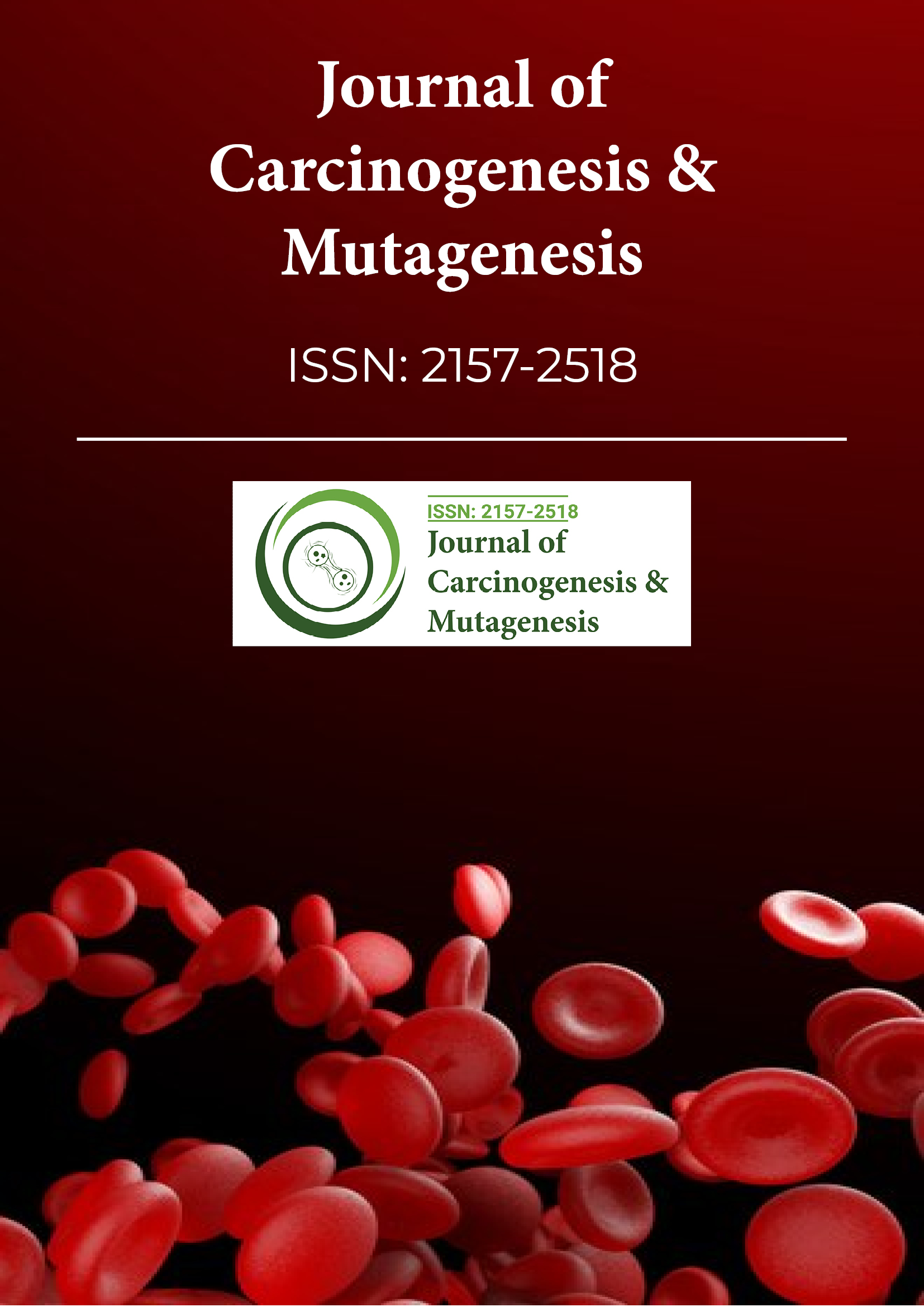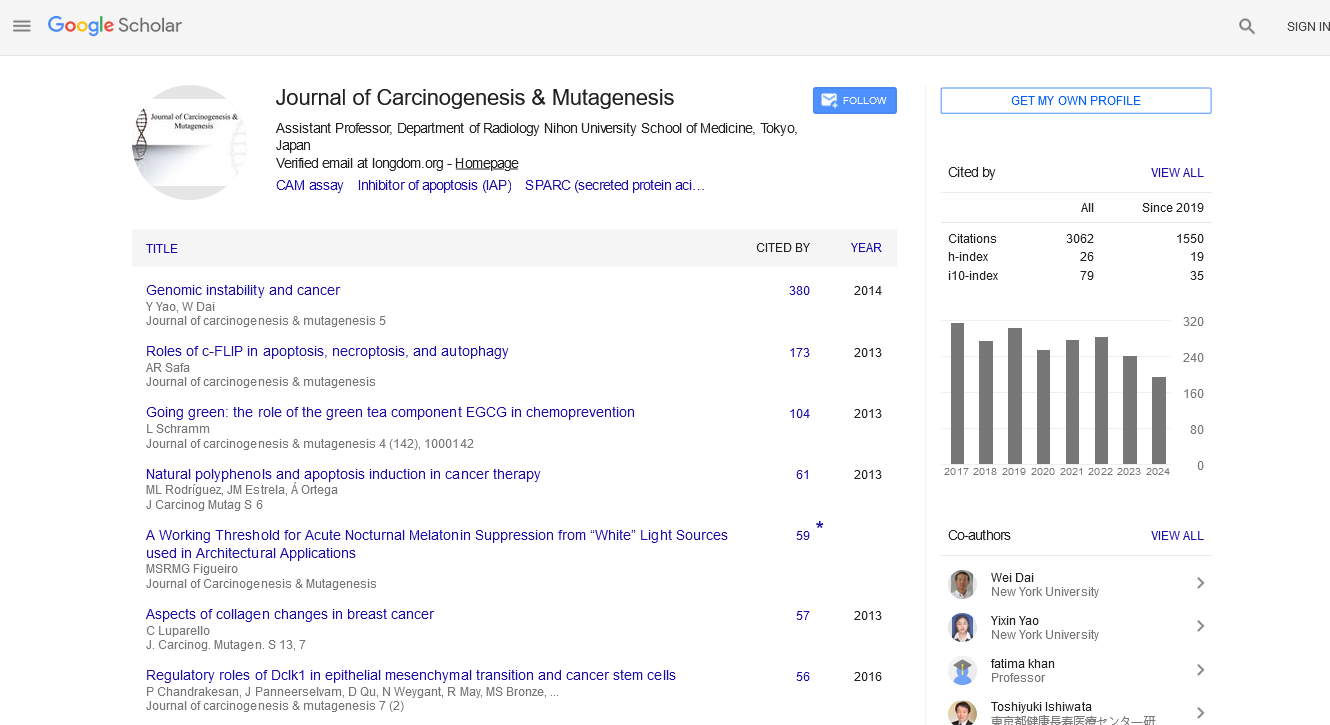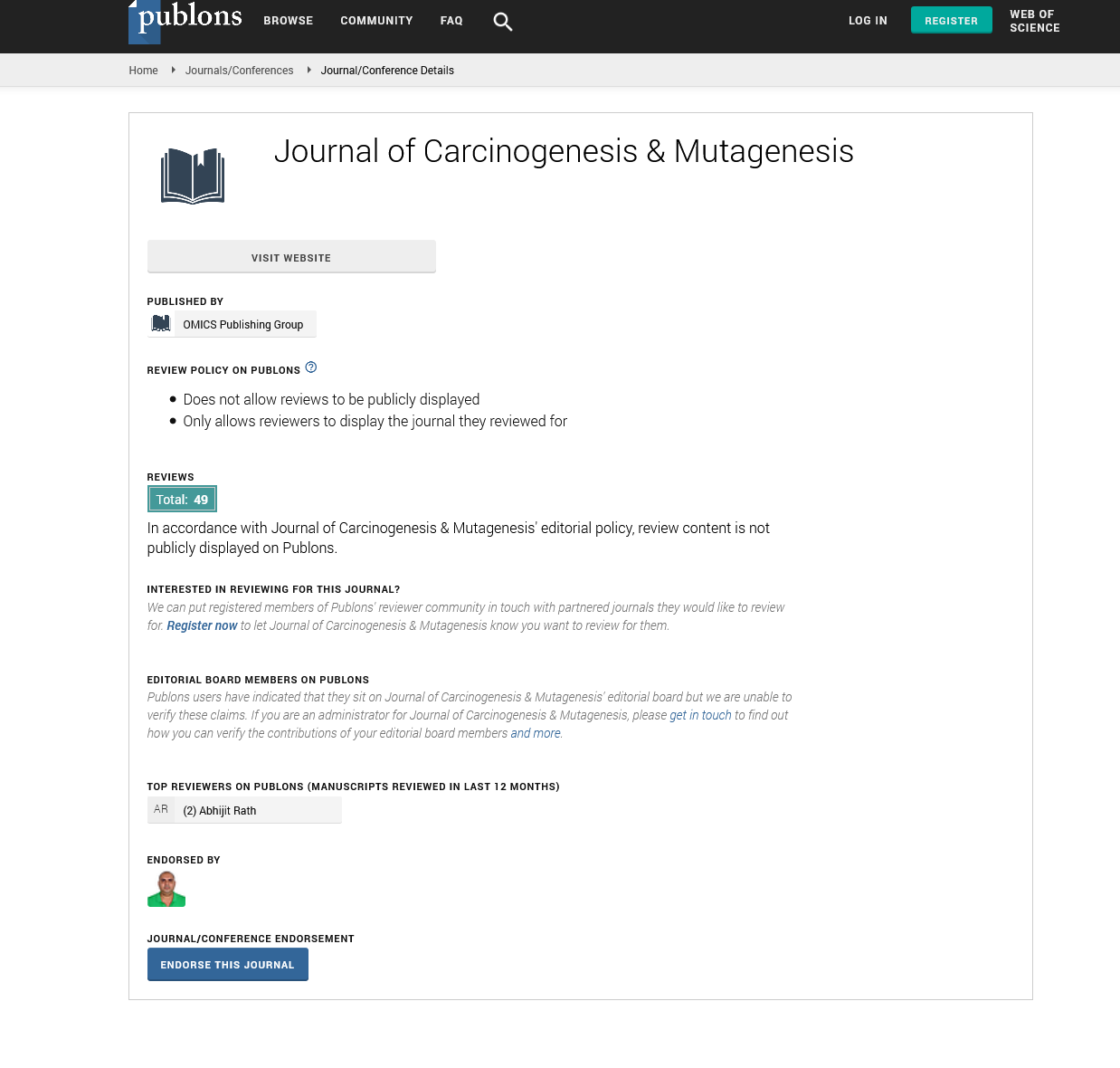Indexed In
- Open J Gate
- Genamics JournalSeek
- JournalTOCs
- Ulrich's Periodicals Directory
- RefSeek
- Hamdard University
- EBSCO A-Z
- OCLC- WorldCat
- Publons
- Geneva Foundation for Medical Education and Research
- Euro Pub
- Google Scholar
Useful Links
Share This Page
Journal Flyer

Open Access Journals
- Agri and Aquaculture
- Biochemistry
- Bioinformatics & Systems Biology
- Business & Management
- Chemistry
- Clinical Sciences
- Engineering
- Food & Nutrition
- General Science
- Genetics & Molecular Biology
- Immunology & Microbiology
- Medical Sciences
- Neuroscience & Psychology
- Nursing & Health Care
- Pharmaceutical Sciences
Editorial - (2021) Volume 12, Issue 5
Mechanism of Cancer
Isabella Gomez*Received: 08-Sep-2021 Published: 28-Oct-2021, DOI: 10.35248/2157-2518.21.12.e128
Introduction
In the past decade, we are gaining more insight of cancer mechanism. The association between environmental factors such as diet, irradiation, infection, and cancer have long been recognized through epidemiology studies. Host susceptibility to cancer has been increasingly recognized through the studies of familial cancer syndromes, single nucleotide polymorphism etc. Carcinogenesis probably results from the interaction between environmental factors and host susceptibility, and is a multi-steps process. Involving a number of somatic genetic alterations through a series of morphological changes. These include activation of oncogenes, silencing of tumor suppressor genes through mutation, loss of heterozygosity or CpG island methylation. The epigenetic change, CpG island methylation, is increasingly being recognized to be an early and important mechanism for tumor suppressor gene silencing. Epigenetic silencing does not involve the changes of nucleotide sequence. Hence it is potentially reversible and may potentially offer early chemoprevention. These mechanisms are discussed in detail in this review.
Environmental Causes
Cigarette smoking, as one of the most important environmental causes for cancer, is the direct and avoidable cause of an enormous cancer burden. No other known single environmental factor has anything like the same degree of importance for cancer in the developed world.
Radiation carcinogenesis is a twentieth century problem. One of the most important pieces of information comes from the longterm follow-up of survivors of the atomic bombs dropped in Nagasaki and Hiroshima. Studies of occupational exposure of diagnostic radiologists, uranium miners, and workers in the nuclear industries have also provided valuable information. More has come from the analysis of cancer incidence in patients exposed to radiation for medical purposes, either for diagnosis or for treatment of non-malignant conditions.
Methylation and Carginogenesis
Altered methylation patterns are known to occur in the DNA of cancer cells. Two ways have been observed: wide areas of global hypomethylation along the genome, and localized areas of hypermethylation at certain specific sites, the CpG islands, within the gene promoter regions.
DNA Methylation and Mutation
DNA methylation can predispose to mutations through cytosine deamination, which converts cytosine directly to thyrnine while the unmethylated cytosine is converted to uracil, which is recognized and repaired more efficiently. The increase mutability of 5-methylcytosine versus cytosine is influenced by three factors: differential repair efficiency, rate of spontaneous deamination, and rate of cell division. The mutagenicity of methylated cytosine in biological systems was first demonstrated by the observation that sites of cytosine methylation corresponded to mutational hotspots in the Lad repressor gene of E. Coli.
Conclusion
We are gaining more insight and understanding to the underlying mechanism for carcinogenesis. Early detection or screening is now possible for a number of cancers. We shall aim at primary cancer prevention by leading a healthy life style.
Citation: Gomez I (2021) Mechanism of Cancer. J Carcinog Mutagen. 12:e128.
Copyright: © 2021 Gomez I. This is an open-access article distributed under the terms of the Creative Commons Attribution License, which permits unrestricted use, distribution, and reproduction in any medium, provided the original author and source are credited.


